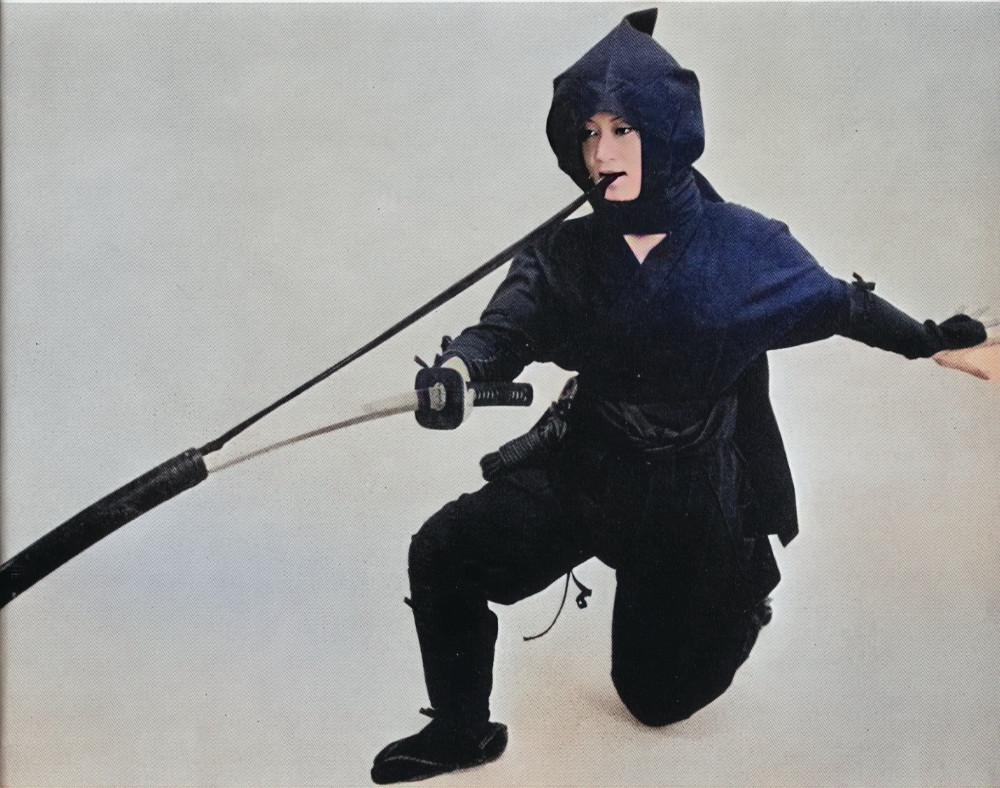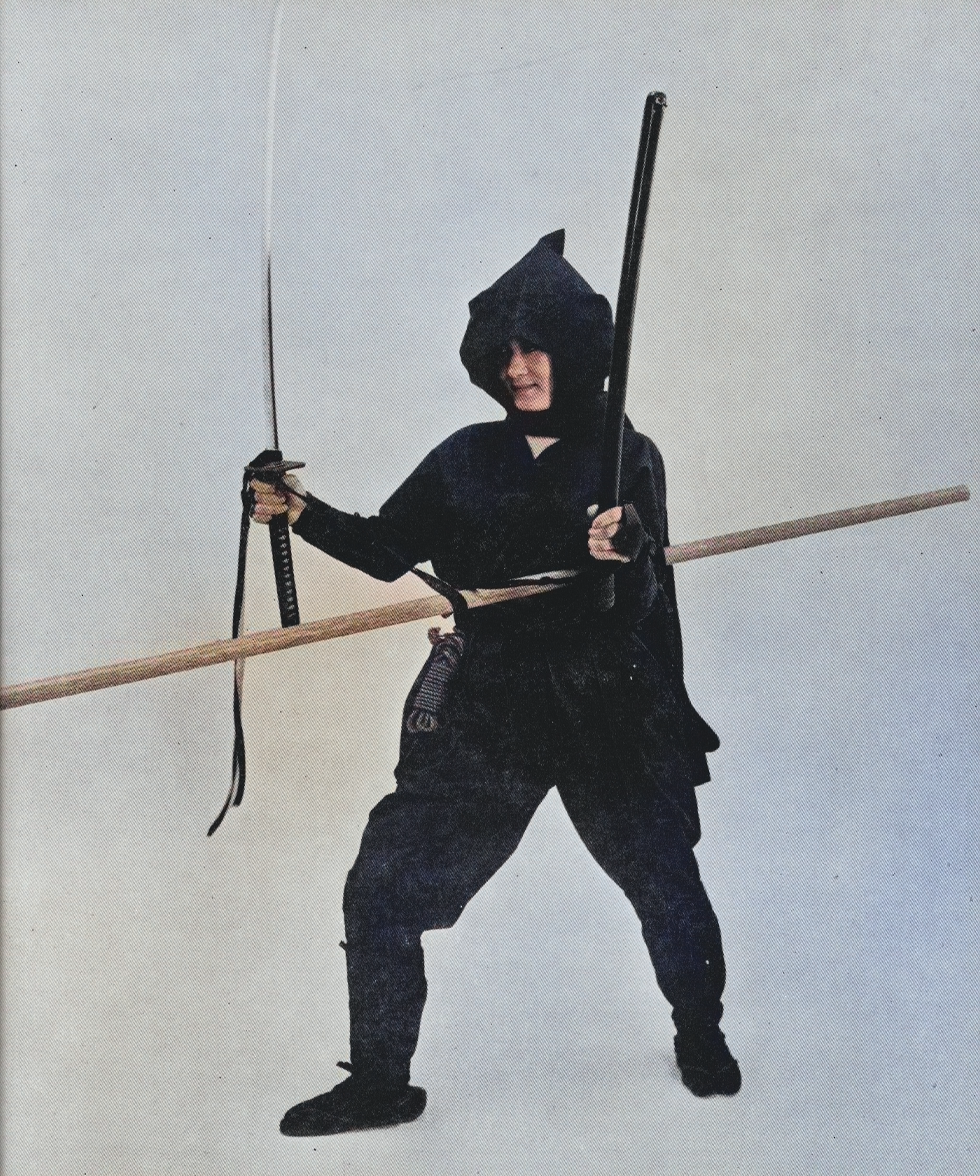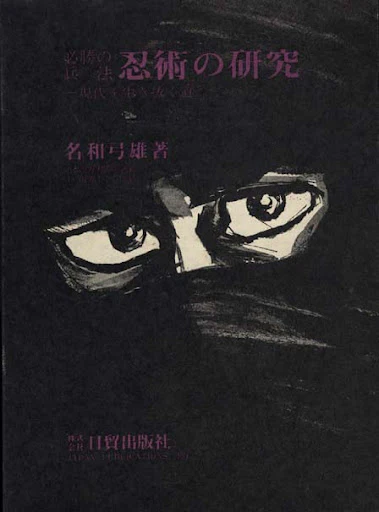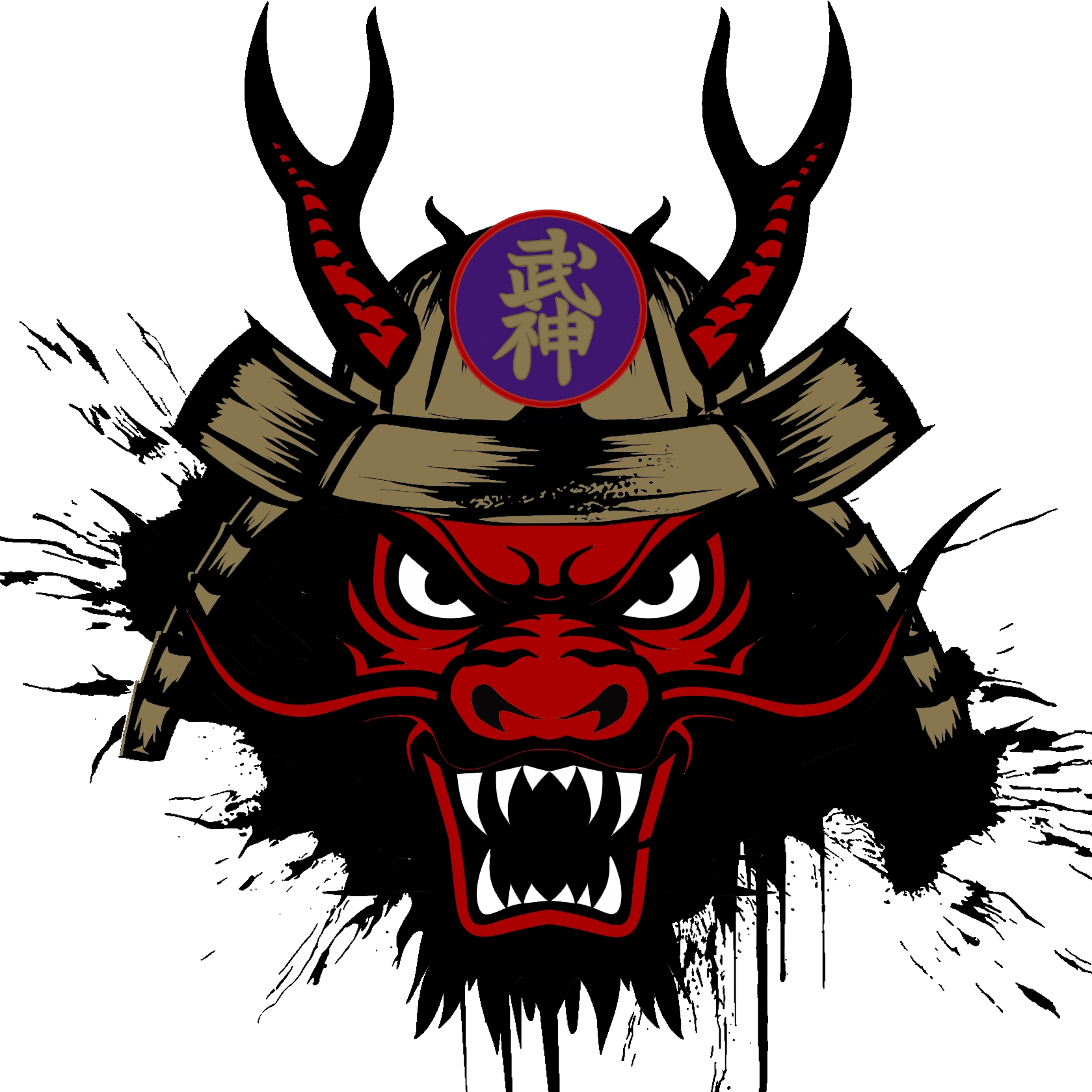下緒七術 SHITAO SHICHIJUTSU (Seven Scabbard Cord Techniques) Page 201-204.
Seven Scabbard Cord Techniques. The scabbard cord (sageo) is a flat, woven strap attached to a protrusion called the chestnut shape (kurigata), located seven or eight sun (21–24 cm) from the scabbard’s mouth, on the outer side when the sword is worn. Typically, the sageo secures the scabbard to the waistband to prevent it from slipping, with a standard length of six shaku (about 1.8 m). However, ninja swords use longer cords, ranging from eight to twelve shaku (2.4–3.6 m), designed for versatile applications.
1. 座探しの術 ZAGASHI NO JUTSU (Technique of Searching While Seated)

As noted in the Art of Probing the Seat, the sageo is held taut in the mouth to keep the sword secure while probing in darkness, making it one of the seven sageo techniques.
2. 止血・縛技の術 SHUKKETSU / SHIBARI-WAZA NO JUTSU (Technique for Hemostasis and Restraint)
During combat, if the waistband or belt is cut, or when rising abruptly at night and unable to find the belt, use the sageo as a substitute. For wounds, cut the sageo to an appropriate length and tightly bind above the injury (closer to the heart for limbs) to temporarily stop bleeding. To restrain a captured enemy, use the eight-to-twelve-shaku sageo as a quick-binding rope.
The “Finger-Lock Rope” or “Six-Inch Rope” method involves crossing the enemy’s hands behind their back, overlapping the fingers, and tying the thumbs’ joints in a cross pattern—six inches of cord suffice. A twelve-shaku sageo can bind six or seven enemies in a chain-like formation.
3. 用心縄・通路仕掛の術 YŌJIN-NAWA / TSŪRO-JIKAKE NO JUTSU (Caution Rope / Corridor Trap Technique)
As detailed later in the six articles on caution ropes, use the sageo as a low tripwire (set at knee height) stretched horizontally across a bedroom entrance. An enemy stepping in trips over the rope and falls, allowing the ninja, half-risen from the room’s center, to strike with a surprise slash (see illustratio
4. 釣刀の法 TSURIGATANA NO HŌ (Sword-Hoisting Method)
When scaling a wall, plant the ninja sword’s scabbard tip into the ground, using the sword and scabbard as a step. Place a foot on the guard to leap upward, grabbing the wall’s top. Hold one end of the sageo in the mouth while climbing, then pull the sword up by the sageo from atop the wall. This is called the Sword-Pulling Method.
5. 幕張りの術 MAKUHARI NO JUTSU (Curtain-Pitching Technique)
During wilderness camping, ninja tie four standing poles with sageo, drape oiled paper over them to form a tent, and shelter from rain, dew, or snow. For snow camping, gather dozens of fist-sized stones, arrange them in a layer, and build a fire atop them. After extinguishing the fire, lay dry grass on the warm stones, warm yourself with a dual-purpose matchlock tube (described later) tucked inside your clothing, and sleep.
6. 旅枕の法 TABIMAKURA NO HŌ (Travel Pillow Method)
For sleeping while traveling, tie the sageo of the long and short swords together, lay the taut sageo under your body, place the two swords upright, and lie atop them. The sageo runs horizontally under your back, with the long sword on the left and the short sword on the right, your body between them. Sleep hugging the long sword with your left arm.
If a thief or enemy tries to steal the swords during deep sleep, the sageo’s movement under your back wakes you. Instantly, while still lying, fling the scabbard toward your feet, draw the blade toward your head, and thrust at the enemy. Ninja draw their swords by throwing the scabbard in the opposite direction, halving the time needed to unsheathe compared to standard methods.
When pursuing an enemy or fleeing in haste without time to retie the waistband, tie the swords’ sageo together, loop it around your neck, let the swords dangle in front, and run while retying the waistband to secure them at the waist.
7. 鑓止めの術 YARIU-DOME NO JUTSU (Spear-Stopping Technique)

This sword technique immobilizes an enemy wielding a long weapon like a spear or long sword, rendering it useless, and allows a thrusting strike. Draw the ninja sword with its scabbard from the waist, quickly tie one end of the sageo to the hilt, and unsheathe the blade, holding it in the left hand with the scabbard’s mouth facing you. Extend the scabbard in the right hand toward the enemy at eye level, raise the blade in the left hand to an upper stance, with the sageo taut vertically along your right side. Wait calmly in this stance.
If the enemy’s spear thrusts low toward your abdomen, cross the blade and scabbard to catch it, press it to the ground, kick the shaft to pin it, and thrust the blade to fell the enemy. If aimed high at your face, cross the blade and scabbard upward to parry the shaft, ready the blade forward, and thrust to kill.
If the spear aims at your chest and passes to the right of the sageo, step slightly left-diagonal forward, parry the spear tip rightward, raise your right elbow to clamp the shaft under your right arm, swiftly swap the blade and scabbard between hands, and open your arms to wrap the sageo around the shaft, binding it. Restrict the spear’s thrusting or pulling, step in at the right moment, and thrust the flat blade into the enemy’s chest to kill. If the spear passes to the sageo’s left, step right-diagonal forward, parry the spear leftward, clamp the shaft under your left armpit, swap blade and scabbard, wrap the sageo around the shaft to immobilize it, and thrust as before to kill.
These are the Seven Scabbard Cord Techniques, fully utilizing the sageo’s potential.
This above was just one section translated from Japanese to English from the book…
忍術の研究 Ninjutsu no Kenkyū by 名和弓推 Yumio Nawa
First published on November 1, 1972. It contains approximately 85,000 words across 377 pages, including around 50 pages of illustrations and index. The work explores historical ninjutsu, martial strategies, and their relevance to contemporary life.
About the Author
Yumio Nawa (real name: Sadatoshi Nawa) was born in 1912 (Meiji 45) into a samurai family of the Ogaki-Toda domain. He was the Sōke (headmaster) of Masaki-ryū Manrikigusari-jutsu and Edo Machikata Jitte-jutsu. His other works include A History of Torture and Punishment, Studies of Jitte and Hojō, and Weapons of the Shinobi, among others. He served as an executive director of the Society for the Research and Preservation of Japanese Armor and Arms, and a standing director of the Japan Writers Club. At the time of publication, he resided in Asagaya-Minami, Suginami Ward, Tokyo.


